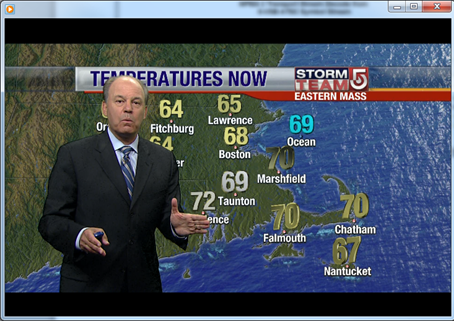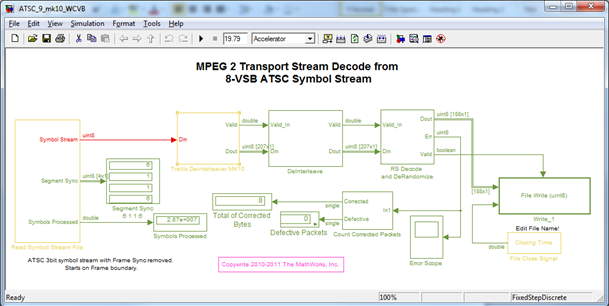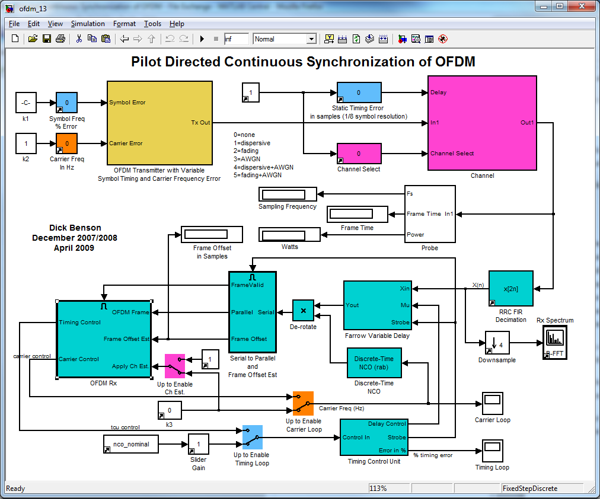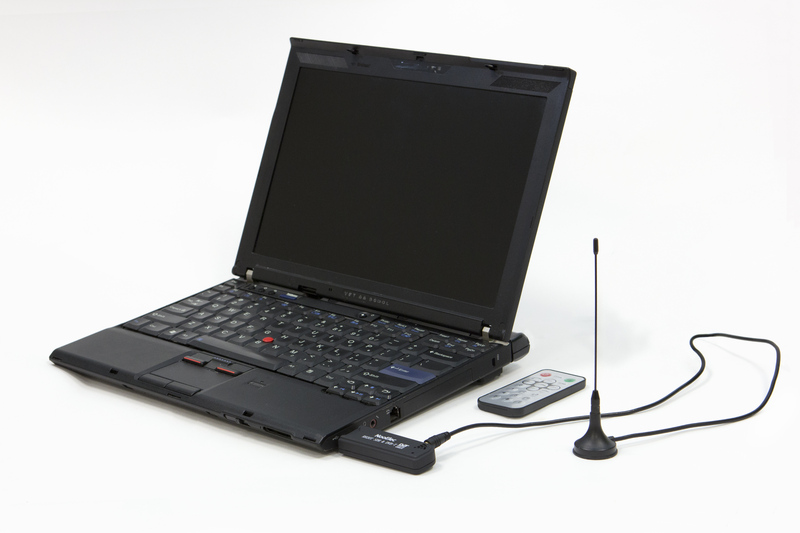Watch HDTV in MATLAB
Idin's Pick this week is ATSC: From RF to Video, by Dick Benson.
Watch HDTV in MATLAB? Well, not quite. This submission shows how to receive ATSC signals (standard used for HDTV in North America) using MATLAB/Simulink, but it’s not real-time. Nonetheless, this is one of the most complete examples of a communication system available on MATLAB Central as it contains every aspect of the receiver from RF to the final video stream. It shows how a standards document comes to life, following a top-down design approach (see the ReadMe file).
The files in this submission show an ATSC receiver that can demodulate, decode, and display a captured off-the-air TV signal. The data file containing the captured signal is provided separately here (1.8 GB). The data file contains a 20-second signal from a weather broadcast on WCBV in the Boston area.

The final model for processing captured signals is shown below:

The raw captured data is passed through two other models to do timing/carrier synchronization and equalization before it is passed to this model. This model contains the symbol processing that follows all front-end processing (it does demodulation, decoding, and MPEG-2 file creation). The final result is an MPEG-2 video transport stream (.ts) file that can be played using Windows Media Player (or any other MPEG-2 player).
The ReadMe file contains detailed description of the algorithms used in each model along with references. It serves as a nice tutorial for using Simulink as well as designing digital receivers (not just ATSC).
Overall, this is a great submission that can be used as a guide in designing any digital receiver in Simulink. It covers every aspect of the problem from capturing off-the-air signals to synchronization and debugging of the models. For more basic tutorials and examples on using Simulink for communication system design, see the demos in the Communications System Toolbox (or the Communications Blockset in R2010b and older versions).
Brief ATSC Standard Background
ATSC standards for digital video transmission were developed in the 1990s by American Television Systems Committee. ATSC was adopted by the FCC in the US in mid-90s; however, the switch to digital did not occur until 2009. In June 2009, television broadcast in the US converted from analog NTSC to digital ATSC (more commonly referred to as “digital TV” or “HDTV”). Canada switched in August 2011, with Mexico to follow in 2015. ATSC uses 8-VSB modulation over the air, protected by Reed-Solomon error-correction coding. The video stream is encoded using MPEG-2 specifications, and Dolby Digital’s AC-3 audio codec is used for audio encoding.
Let us know what you think, or leave a comment for Dick here!
- カテゴリ:
- Picks









コメント
コメントを残すには、ここ をクリックして MathWorks アカウントにサインインするか新しい MathWorks アカウントを作成します。